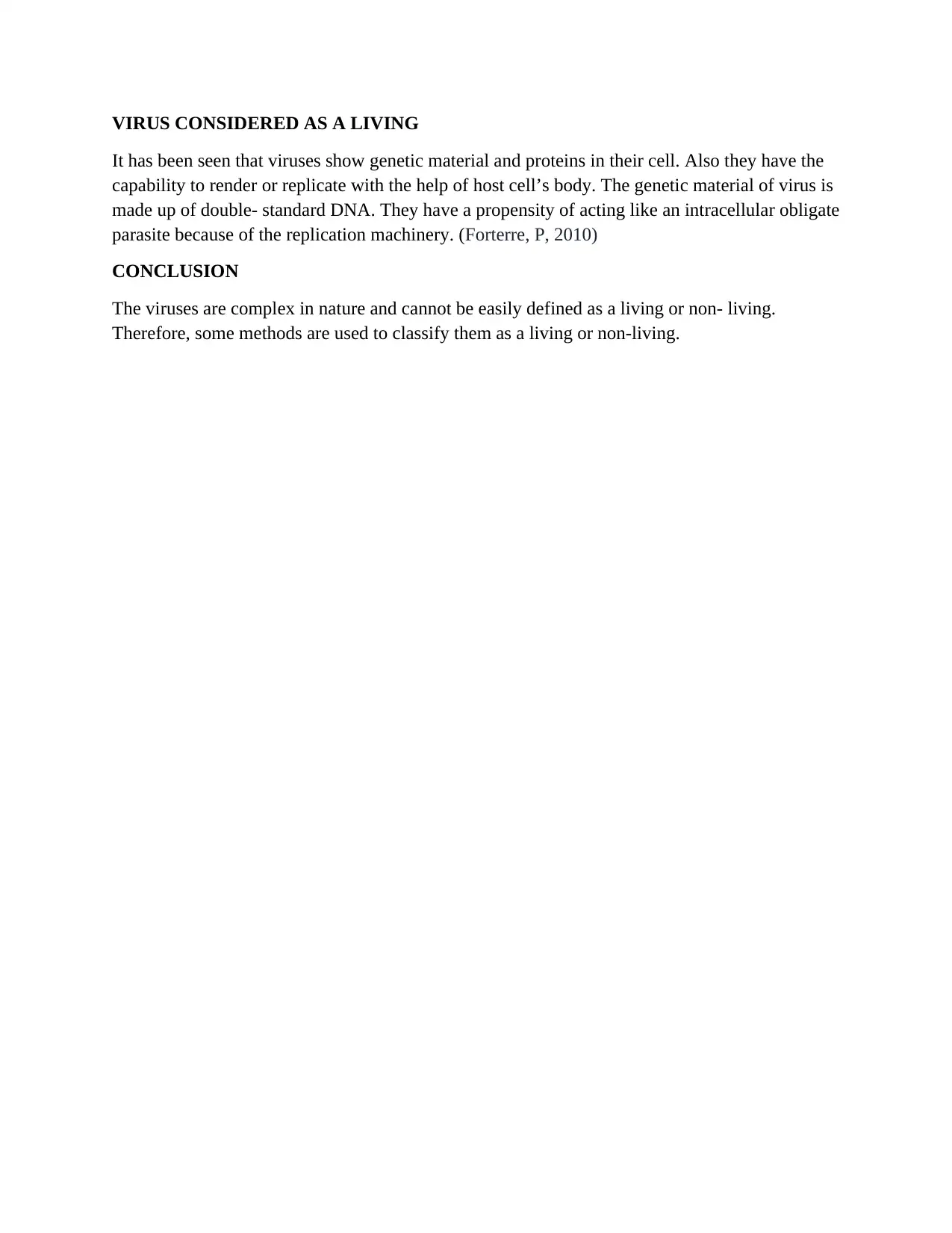Virus Classification
VerifiedAdded on 2019/09/26
|3
|610
|280
Report
AI Summary
The concept of viruses is explored, discussing their characteristics and whether they can be considered living or non-living. The article highlights that viruses are parasites that rely on host cells for energy and replication, but possess genetic material and proteins similar to those found in living organisms. This complexity makes it challenging to define viruses as solely living or non-living, leading some scientists to consider them as neither, while others argue that their ability to replicate and adapt to environments may qualify them as alive.
Contribute Materials
Your contribution can guide someone’s learning journey. Share your
documents today.
1 out of 3
![[object Object]](/_next/static/media/star-bottom.7253800d.svg)








